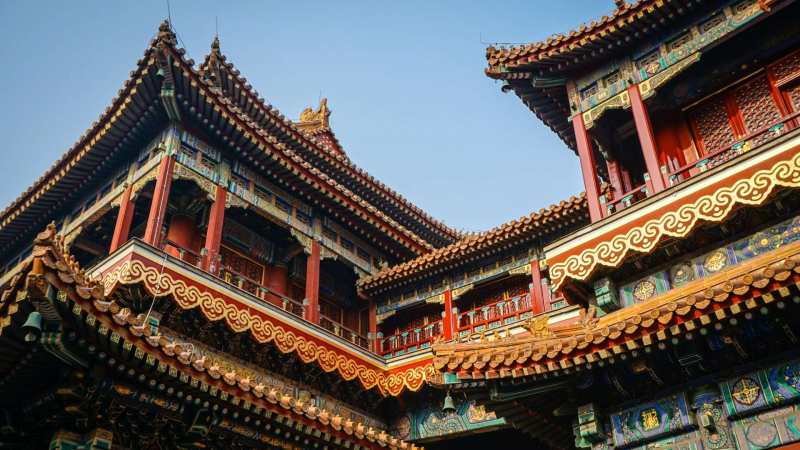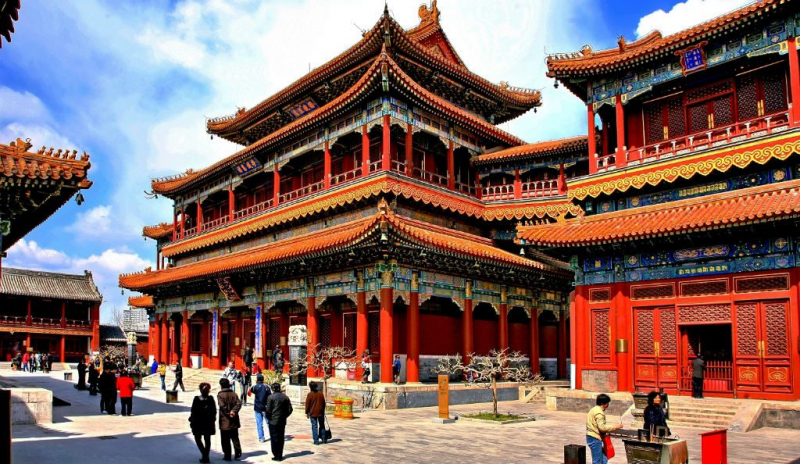The Lama Temple
The Lama Temple, also known as Yonghe Temple, Yonghe Lamasery, or Yonghe Lama Temple, is located in central Beijing. The Lama temple is the most prominent Tibetan Buddhist temple in Beijing, a popular worship place for locals. Since it was converted from a royal palace to a Tibetan Buddhist temple by the Qianlong emperor (r. 1735–96) in the Qing Dynasty, the lama temple has been one of China's most influential Tibetan Buddhism temples. It is today a museum of Tibetan Buddhism and a functioning temple where people pray.
The Lama Temple was built in 1694 during the early Qing Dynasty as the Royal Court of Prince Yinzhen. When Prince Yinzhen became the Yongzheng Emperor in 1722, as he was obsessed with Tibetan Buddhism from an early age, he ordered half of his Royal Court be turned into a house of the Gelug Sect of Tibetan Buddhism. In 1725, the remaining half of his Royal Court burnt down unexpectedly, so the house of the Gelug Sect that was left was appointed as an imperial palace outside the Forbidden City. It was named the Palace of Eternal Peace (Yonghe Gong).
After the death of the Yongzheng Emperor, the Qianlong Emperor ordered the reconstruction of Yonghe Gong in memory of his father, the Yongzheng Emperor. In 1744, Yonghe Gong was converted into an official Tibetan Buddhist temple (the Lama Temple) and became the Qing government's Beijing office of Tibetan Buddhist affairs.
Other noteworthy buildings include the Pavilion of the Four-tongued Stele (Yubi Ting), which houses a stele dating back to 1792 that contains the history of the Lama religion written in Chinese, Manchurian, Tibetan, and Mongolian. The Hall of the Buddhist Wheel (Falun Dian), the teaching and assembly hall of the monastery, its interior dominated by a six-meter-tall statue, two thrones, and numerous sacred manuscripts. Be sure to also see the most significant building at the Lama Temple, the Pavilion of Four Thousand Fortunes (Wangfu Ge), with its enormous 18-meter-high sandalwood statue.
Address: 12 Yonghegong Street, Dongcheng, Beijing

















